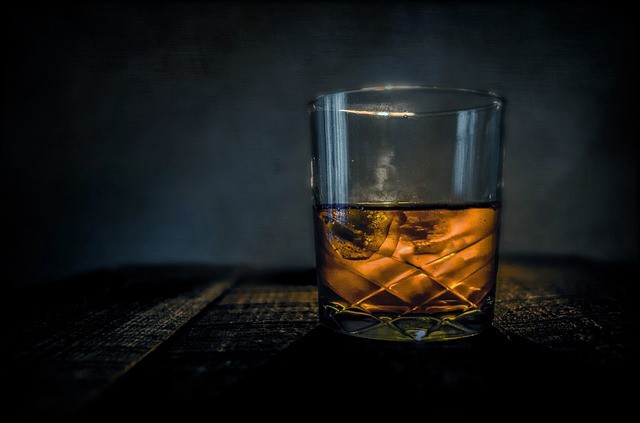
Some people think that bourbon and whiskey are the same thing, and the terms can be used interchangeably. Wrong. Bourbon and whiskey are NOT the same thing. In fact, there are very strict federal regulations for bourbon in order for it to be labeled and advertised as a bourbon. Remember that:
“All bourbon is whiskey, but not all whiskey is bourbon.”
There are people from all over reading my blog; Kentuckians and non-Kentuckians (and heck, there are probably even some Kentuckians) that may not know the difference, and since it is National Bourbon Heritage Month, I figured that I would go back to the basics and answer the questions: What are the requirements for something to be considered bourbon? What is the difference between bourbon vs. whiskey? What happens to the barrels after they have been used? How much liquid can one barrel hold? What is bourbon made of?
Bourbon is ‘America’s Native Spirit’
On May 4, 1964, Congress declared bourbon “America’s Native Spirit.” What does that mean, you ask? It means that to be called bourbon, it must be made in the United States, but everyone knows that means Kentucky. After all, 95% of the world’s bourbon is made in Kentucky.Before Prohibition, there were over 2,000 distilleries in Kentucky, and now there is around 30 operating distilleries. However, there are a few that are re-opening (or should I say being renovated and/or renamed) in early 2017, such as Castle and Key and James E. Pepper Distillery, as well as several in Louisville in 2018.
What are the requirements for something to be considered a bourbon?:
The Federal Standards of Identity for Distilled Spirits (27 C.F.R. 5) state that bourbon must meet these requirements:
- Bourbon must be made of a grain mixture that is at least 51% corn. More can be used, but anything less is a whiskey, not bourbon.
- Bourbon must be distilled to no more than 160 (U.S.) proof (80% alcohol by volume).
- Bourbon must be aged in new, charred oak barrels.
- Bourbon may not be introduced to the barrel at higher than 125 proof (62.5% alcohol by volume).
- Bourbon which meets the above requirements and has been aged for a minimum of two years, may (but is not required to) be called Straight Bourbon.
- Bourbon aged for a period less than four years must be labeled with the duration of its aging.
- If an age is stated on the label, it must be the age of the youngest whiskey in the bottle.
- Only whiskey produced in the United States can be called bourbon.
What is Proof?
Proof is the traditional term for alcoholic content of a spirit. It is two times the percentage of alcohol. For example, a bourbon that is 80 proof would be 40% ABV (alcohol by volume).

What is bourbon made from?
There are several rules, but bourbon’s mash bill must be at least 51% percent corn (usually, it is much higher). The remainder of the mash needs to be wheat, rye, barley, or a combination of those. Usually the corn comes from Kentucky or Indiana, but if for some reason, the corn is not up to the distillery’s standards, then they will get it from elsewhere.
A typical mash might consist of 80% corn, 10% of a flavoring grain (some examples would be rye or wheat), and 10% malted barley, but it varies depending on the distillery and the distinct product. The precise breakdown is known as the mash bill.
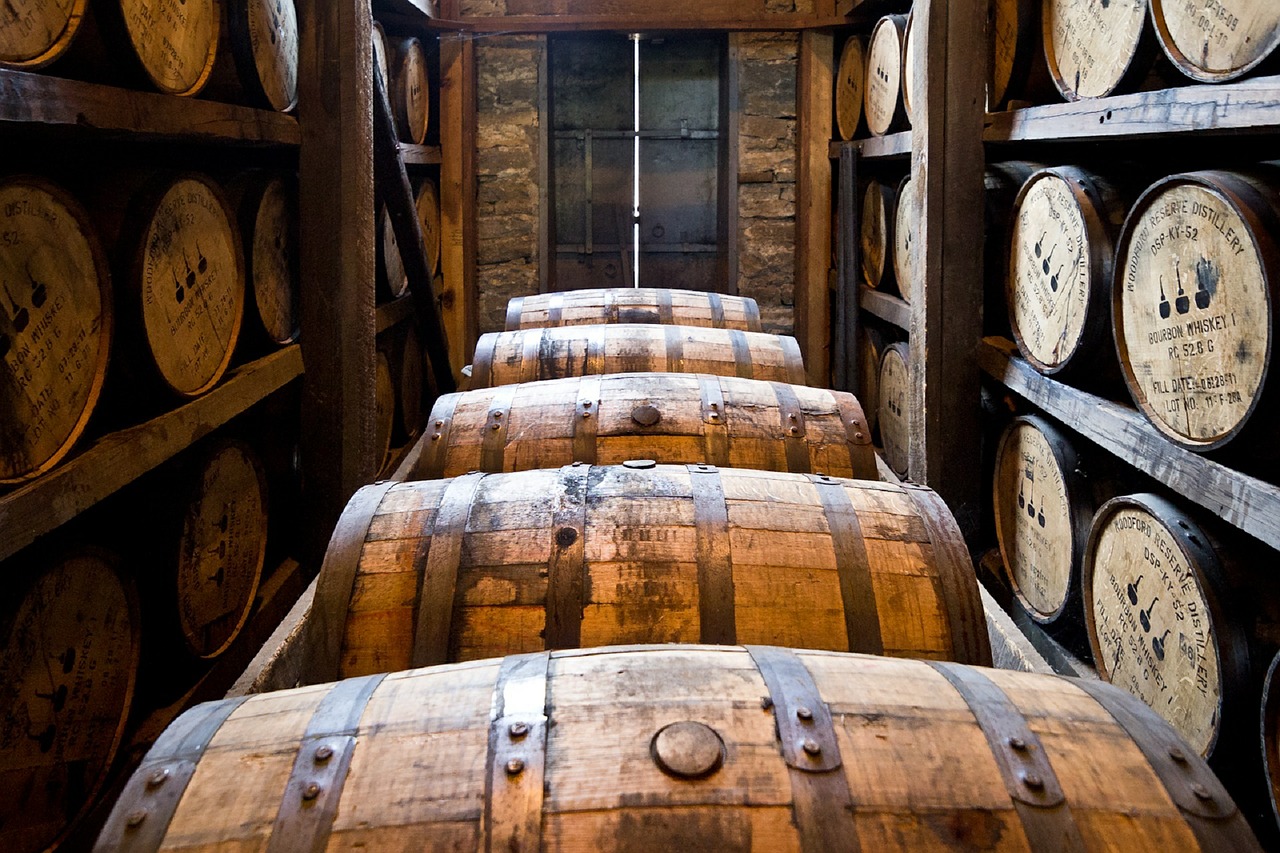
Where does bourbon get its flavor?
Bourbon, by law, must be aged in a brand-new, charred white oak barrel to be called straight bourbon whiskey, which means the barrel can be used only once for bourbon (the barrel has a level four char – to obtain a level four char, flames are shot through the barrel for 55 seconds). Aging in oak, gives the bourbon flavors of caramel, cinnamon, nuts, and fruits – which are very common flavor notes commonly found in bourbon. It can also add toffee or vanilla notes, because the sugars in the wood caramelize during the charring process. The whole flavor wheel can be a whole separate post in itself (looks like a good idea for a future post!).
Oh… That limestone water + the perfect climate = great bourbon
Kentucky is the only state that has the perfect natural mix of climate, conditions and pure limestone water necessary for producing the world’s greatest bourbon. The limestone adds minerals, like calcium, which helps the yeast used to make bourbon. The limestone also filters out impurities, most importantly iron, which gives liquor a bad taste.
There is nothing added to bourbon, except water:
There are no additives added to bourbon, or else it would not be a bourbon. Nothing can be added to bourbon in the distilling process, except water. So, what does that mean? All of the flavor is coming from the charred oak barrels. That’s why when Wild Turkey wanted to add honey to their bourbon, it became Wild Turkey Liqueur and was later renamed to American Honey. And Jack Daniels? It’s not a bourbon. It’s a whiskey. It’s almost identical to bourbon except there is one key difference: It’s filtered through maple charcoal. That’s why it is called Tennessee whiskey and not a bourbon.
Bourbon usually comes out of the barrel at a much higher proof than people drink it. It varies on the individual barrel. To ensure a consistent proof, the distiller adds enough water to bring the alcohol down to the desired level. This is usually anywhere from 80 to 100 proof.
What about aging?
Bourbon can be aged for any length of time, but the container must be made from charred new oak. Barrels can not be reused to aged bourbon. If you are aging your whiskey in a previously used bourbon barrel than it isn’t bourbon, even if it meets all of the other requirements.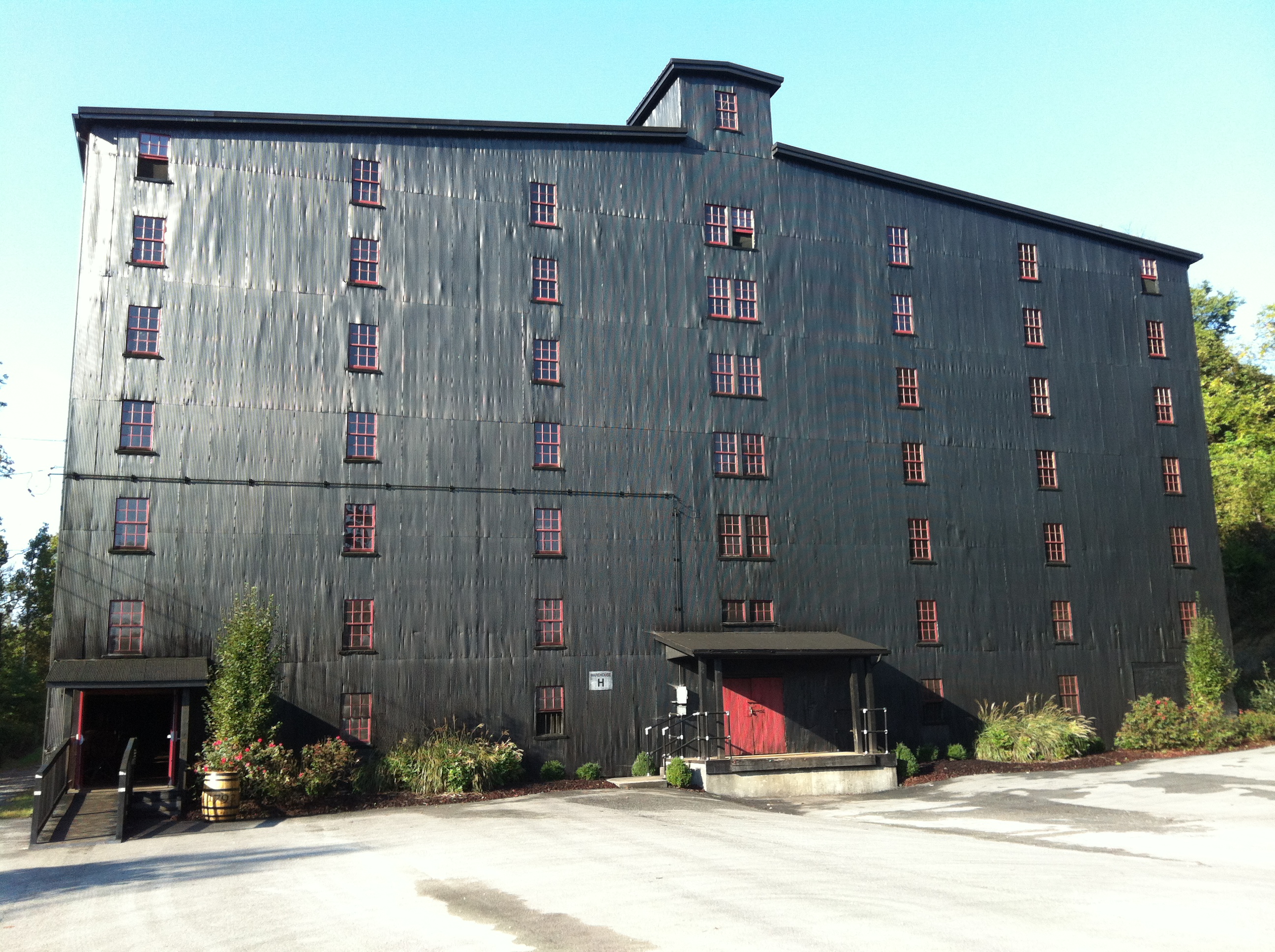
Where are the barrels kept?
Barrels are stored in rick houses (also known as rack houses or warehouses). Usually, they are five to nine stories. However, Four Roses is an exception, as they have one story rick houses. The bourbon on each story will mature at different rates due to the temperature variations. Some distilleries will rotate their barrels to obtain a more even maturation, and some just wait to blend the bourbons.
How much does one bourbon barrel hold?
1 barrel = 53 gallons = approximately 208.2 liters (A fifth of bourbon is 750mL ).
What happens to the barrels?
After the distilleries are finished with the barrels, the barrels are shipped to Mexico for aging tequila or Scotland for aging scotch. They are also sent places, so things like coffee, tobacco, beer, and maple syrup can be stored in them. You can also buy unfinished empty barrels and finished empty barrels to be used as furniture or tables. There also is a big market for bourbon barrel jewelry and accessories.
What is the Angel’s Share?
The longer its aged, the more is lost to evaporation. In Kentucky’s climate, this usually amounts to around 4% loss every year. The evaporated bourbon is known as the Angel’s Share, because it has been said to have gone to the angels.
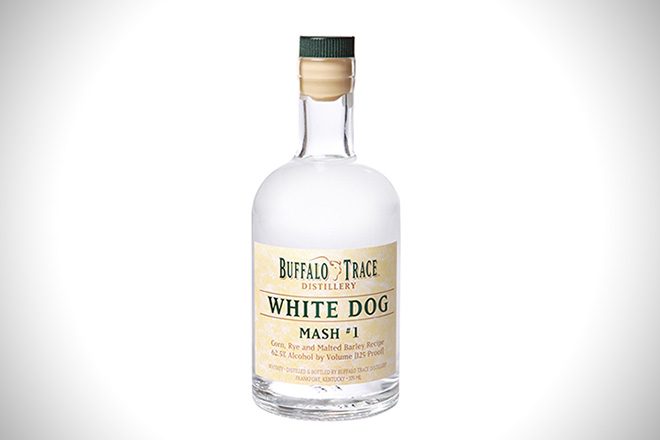
What is White Dog?
White dog stops when it leaves the still. Some water may be added, but the main takeaway is that it never goes into that charred oak barrel, which gives bourbon its color and a lot of its flavor. It’s the straight spirit, and it’s about as clear as liquids come. It’s generally sold at 80 up to 130 proof.
Does bourbon age in the bottle?
Once it is removed from the barrel and bottled, it stops aging. If the bottle is stored in the right conditions, it will remain virtually unchanged forever.
What is Straight Bourbon?
Most bourbon is labeled as straight bourbon. That just means that it was aged for at least two years in new, charred oak barrels. If it it’s aged for at least two years, but less than four years, the age has to be stated on the label. If it’s aged for at least four years, it does not need to include an age, although it can.
Blended Bourbon?
Bourbon that is labeled blended or a blend may contain coloring, flavoring, and other spirits (such as un-aged neutral grain spirits), but at least 51% of the product must be straight bourbon.
What is a Single Barrel Bourbon?
This is more of a marketing term, but single barrel means that all of the bourbon has came from a single barrel. Usually, there are many barrels dumped into large tanks and then it is bottled from there. This can have an advantage by enabling the distiller to ensure a more consistent flavor for the product by adjusting the batch with the addition of barrels with certain flavor profiles.
What is a Small Batch Bourbon?
Small batch can mean whatever the person wants it to be. This term implies that the bourbon was made in smaller quantities or perhaps batched from a smaller number of barrels. There is no legal requirement for this though.
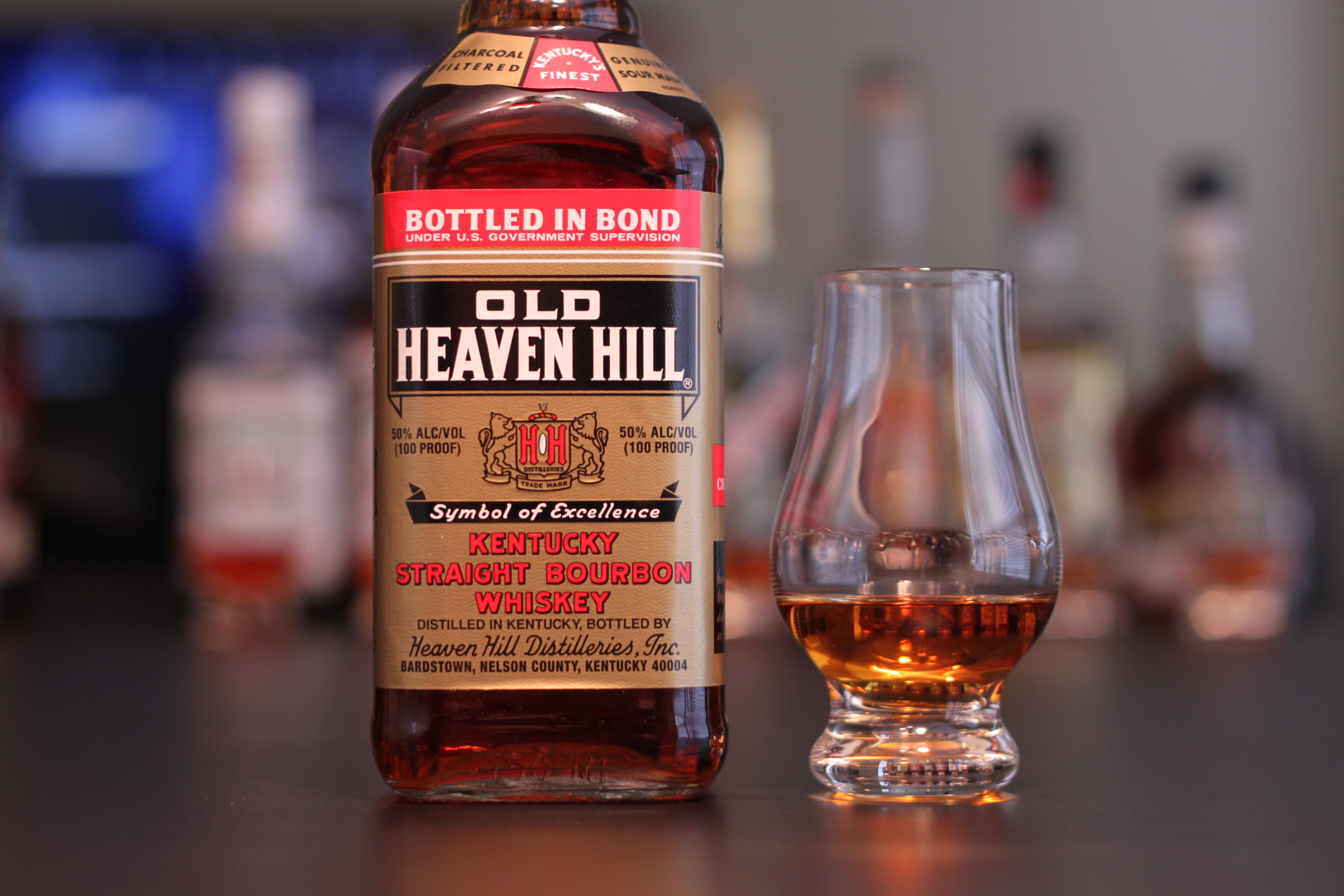
What does “Bottled In Bond” mean?
Bottled in bond or Bonded is a legal designation created by the Bottled in Bond Act of 1897. It specifies that it be made at one distillery by one distiller, and that it was the product of one distilling season. So, you can’t have a mixture from different years or different distilleries. It also must be aged at least for four years and bottled at 100 proof. The label on the bottle must identify the distillery where it was distilled, and if different, where it was bottled. Only spirits in the United States can be designated as bonded.
What is Barrel Strength or Cask Strength?
There is no water added, and whatever proof comes out of the barrel is what goes into the bottle.
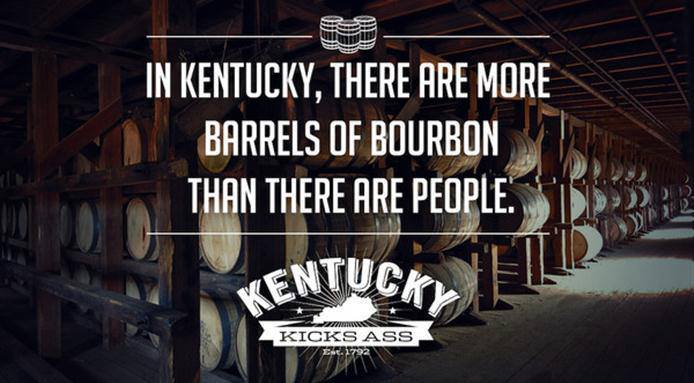
Just some fun facts:
- Bourbon is a $3 billion industry in Kentucky, generating 15,400 jobs with an annual payroll of $707 million. Spirits production and consumption pours more than $166 million in state and local tax coffers every year.
- Bourbon production has increased 315 percent since 1999 (455,078 barrels compared to 1,886,821 in 2015), with premium small batch and single barrel brands driving the Bourbon renaissance.
- More than $1.3 billion in capital projects (just in Kentucky) has been completed or is planned over the next five years, from new distilleries and aging warehouses to bottling facilities and tourism centers.
- Bourbon is revolutionizing Kentucky tourism and pouring much-needed revenue into local communities. Kentucky Bourbon Trail visitors spend $1,000 on average during their trip. More than 85% of visitors are from outside Kentucky.
Since this was a beginner’s guide to bourbon, I skipped the whole bourbon making process. It’s a pretty lengthy process from the grain selection to the bottling. It takes quite a bit of time to get there, even though the majority of it, is spent waiting on the aging barrels. I’ll save that for a future post, so I can only focus on those specific details.
Woo! We have made it to the weekend, once again!


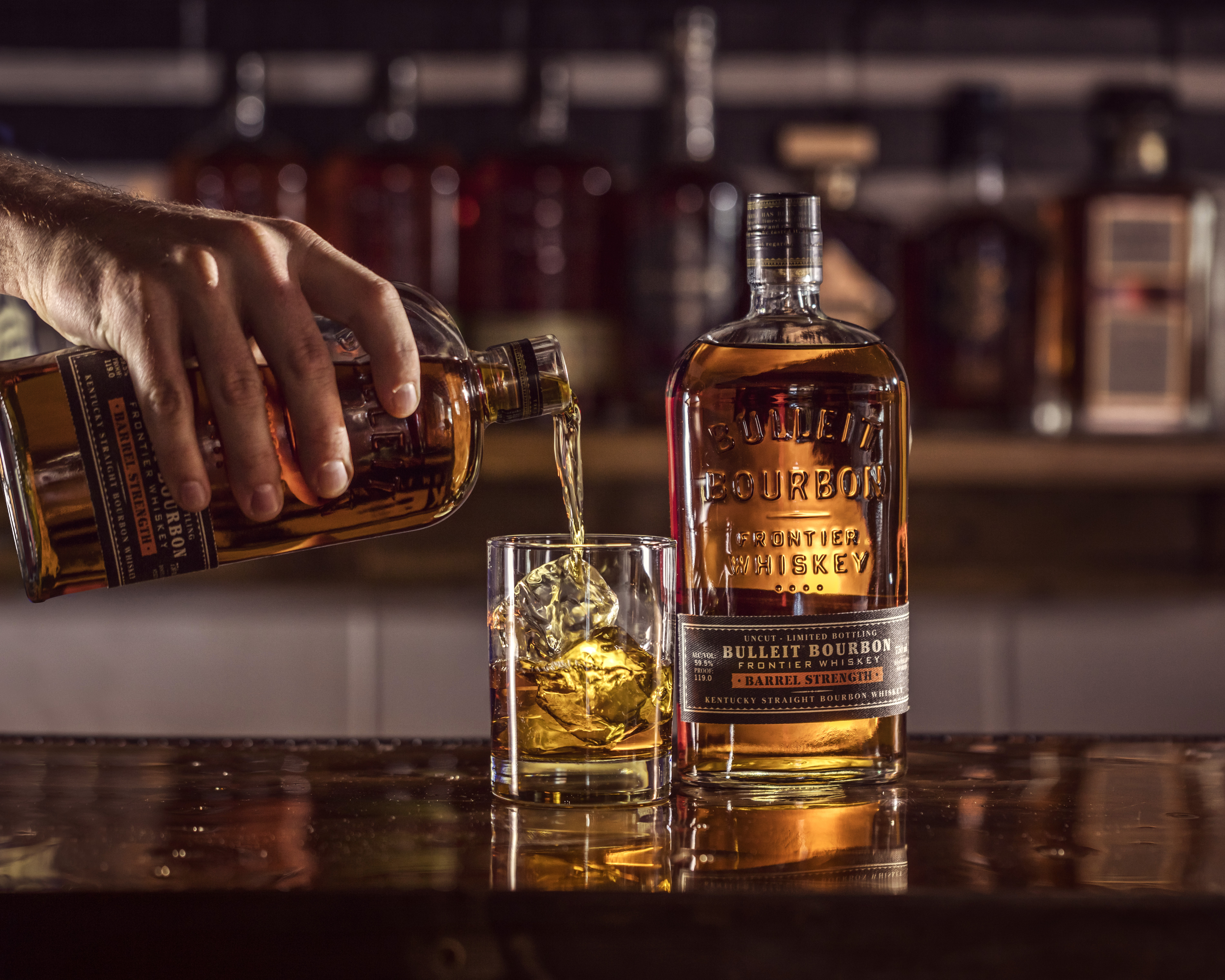





I am so coming to hang out with you. I am loving all the information you are sharing about bourbon. Iam learning so much and it is very interesting.
Thanks so much 🙂
Wow I just got a proper bourbon education. It’s amazing that I know so little about a drink I’ve been enjoying for years!
🙂
I totally didn’t know the difference. My husband really liked a certain brand of bourbon, but it may have been whiskey… when we lived in South Carolina. I use to call it the opposite and he’d remind me what it was, I’d still forget. 😀
Anyway, he can’t get it here. WAIT! It just hit me, it’s Virgil Kaine! I just Googled it, it’s a bourbon. 😀
Have you heard of it?
I haven’t heard of that one!
White Dogs reminds me of Ever Clear… I love sweet treats flavored with Bourbon…
I love little chocolates with bourbon in them!
Right…
Wow, never knew the difference myself. Thanks for the education!
You’re welcome 🙂
I didn’t know a lot of this, and pretty sure my hubby doesn’t either. That said I still don’t like it. I did find I like coconut vodka recently, always fun to try new drinks!
That sounds pretty interesting! I think that could taste good!
I didn’t know this, all bourbon is whiskey, but not all whiskey is bourbon. I love learning something new.
🙂
Bourbon is really interesting… and I had no idea about these little tidbits of info! I just enjoy it as a cocktail here or there! haha… What a fun experience!
There’s so much history with it and the industry has been around for such a long period of time!
There is a continual debate in our house about which bourbon is best. I love all the info you provided in this post! Very interesting that the barrels can be used to season other liquors.
Hehehe!! Which do you think are best?
This is so helpful, I am not a bourbon drinker but my dad and husband are so it’s great bonding for them, although it’s nice to be able to understand!
🙂
I’ll take a good whiskey or bourbon any day. My granddaddy used to make corn liquor back in the day and I would have loved to go a bourbon tasting with him through Kentucky.
That’s so cool!
Some of the best bourbon I’ve tried has been from Kentucky. You guys do it well. 🙂
🙂 Which have you had?
I’m not a Bourbon drinker and I don’t think I will know the difference. Lol. These are good to know.
I didn’t even know that bourbon and whiskey are related, I thought they are two different types of alcohol. I don’t drink a lot, but this is pretty awesome to know!
They are sort of similar, but just have different requirements and regulations hehe!
I can’t drink whiskey or bourbon since they’re too strong for my liking. The only thing I can tolerate is the once in a blue moon margarita. – HilLesha 🙂
Hehe 🙂 I’m not too big on margaritas. I’ve had some good ones though!
I have never tried bourbon before, but when I went to Canada I tried Rye, which I think is similar or the same as whiskey. I used to be a tequila girl, after kids I am now a wine girl 🙂 Really cool to hear about how it is made!
They make rye bourbons and whiskies. American rye is different than Canadian rye though!
Ooooo now this is my kind of post!!!! I use to love bourbon so much!!! I’ve kind of shyed away from it lately but omg it is good!
Glad you enjoyed it! 🙂
Wow, what interesting facts! I never would have thought plus I haven’t tried bourbon either lol since I’ve always thought that it’s really strong for my liking.
🙂
Me too! I think it’s so interesting!
[…] in its name; it’s a liqueur (To know what makes bourbon, bourbon, you can check out my post: here). A liqueur is an alcoholic beverage made from a distilled spirit that has been flavored with […]
I love bourbon! A bourbon old fashioned is definitely one of my all-time favourite cocktails.
Bourbon is my absolute favorite of any of the spirits. All the information you shared is very interesting!
Wow so many different facts. I drink bourbon with coke. But I never knew about all these facts!
[…] you don’t know anything about bourbon, you’ll probably want to read this post: Bourbon 101: Starting With the Basics. Most importantly, […]
[…] you are a beginner to bourbon, then you want to ease into it (you may want to start with my post, Bourbon 101: Starting With the Basics). If you are a complete novice, then you don’t want to buy a bottle that would be more fit […]
[…] About a week or so ago, I was at Liquor Barn picking up a bottle or two of bourbon. Liquor Barn is the mecca of alcohol. At over 55,000 square feet, it’s the largest retailer in Kentucky for wine, beer, and spirits. It’s seriously a sight to behold. If you ever visit Lexington, be sure to check out the Hamburg location. Liquor Barn alone has over 200 different bourbons, and that’s not including whiskey or scotch, which are completely different things. All bourbon is whiskey, but not all whiskey is bourbon. Confused? I explain that in detail in the post, Bourbon 101: Starting With the Basics. […]